This post contains affiliate links, which means if you choose to buy something through those links, I’ll receive a small commission at no extra cost to you. I will always identify affiliate links for you. Thanks for supporting my work!
Last year, I made it my mission to knit some lightweight tshirts for summer. As part of that journey, I wanted to spend some time knitting with silk and linen yarns, which I don’t often use while knitting the socks and other accessories that make up the bulk of my design work.
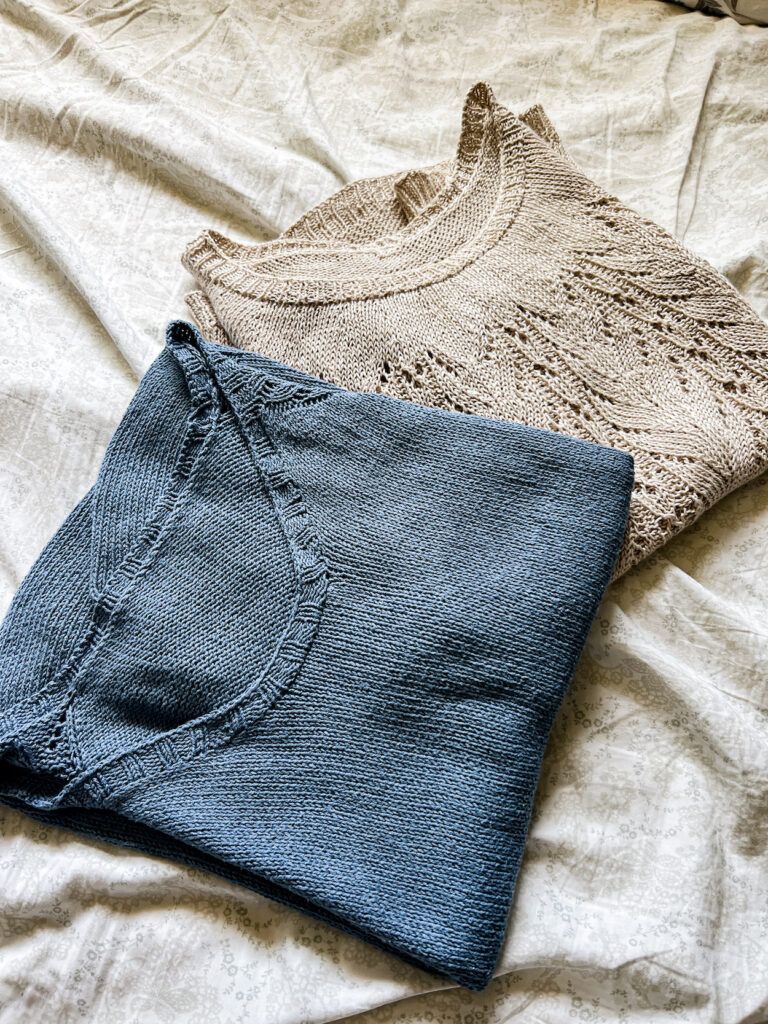
Silk and linen are both beautiful fibers, but they behave very differently from how wool does. I learned some key lessons along the way, some of them by making mistakes and some just by observing.
This blog post is aimed at helping you learn those lessons without having to go through the same trial and error process. I hope that you’ll be able to start knitting with these lovely fibers while maintaining realistic expectations and enjoying your knitting experience.
Also, in case you want to use the specific yarns I used, my blue shirt is knit with Knitting for Olive Pure Silk (affiliate link) and my tan shirt is knit with Katia Lino 100% (affiliate link).
1. Silk and Linen Have Zero Elasticity
One of the traits of wool that makes it so popular is its elasticity. When stretched, wool fibers bounce back into shape.
Silk and linen, on the other hand, lack elasticity. This means that when their fibers are stretched out, the fibers won’t return to their original shape. It also means that they can droop and sag after extended wear.
This lack of elasticity is crucial because it affects all sorts of things having to do with your knitting projects. Stitch definition for things like cables and bobbles will be less crisp, but tension issues in stockinette will be more obvious (more on that in a moment). A cast-on that would be stretchy enough in wool may be too stiff in silk or linen. The fit of your garments may change more dramatically after blocking your silk or linen top than it would with a nonsuperwash wool.
So as much as I know some of you will hate to hear it, you really do need to swatch for your projects if you’re using linen or silk yarn. I know. I’m sorry.
2. Your Gauge Will Probably Change
If you’re a frequent garment knitter who uses the same yarn weight and needles in most of your projects, you probably have a good sense of what your gauge usually is. Maybe you’ve even gotten to the point where you usually skip the gauge swatch if it’s your usual yarn and needles.
Do not fall into complacency here.
Knitters often find that their gauge changes significantly when working with silk and linen yarns. That’s due to two factors.
First, the lack of elasticity mentioned above means that your actual tension as you knit is slightly different from your tension when working with wool. Pulling the yarn tightly may hurt your hands, resulting in looser tension. Relatedly, even if you pull the yarn tightly, the lack of elasticity means the yarn won’t give when you pull on it, and so you won’t be able to tighten your stitches as much.
The second factor is how linen and silk interact with water. This is also because of their lack of elasticity. When wool comes into contact with water and then you lay it flat to dry in a particular shape, the wool will retain that shape. Silk and linen, on the other hand, will stretch dramatically during the blocking process and will continue to do so as gravity pulls on the garment during wear.
As a result, you need to be thoughtful about not only swatching, but swatching the right way. Knit a larger than usual swatch. Then, be sure to wash and dry it the way you’d wash and dry your finished garment. Only measure your gauge after you’ve completed these steps.
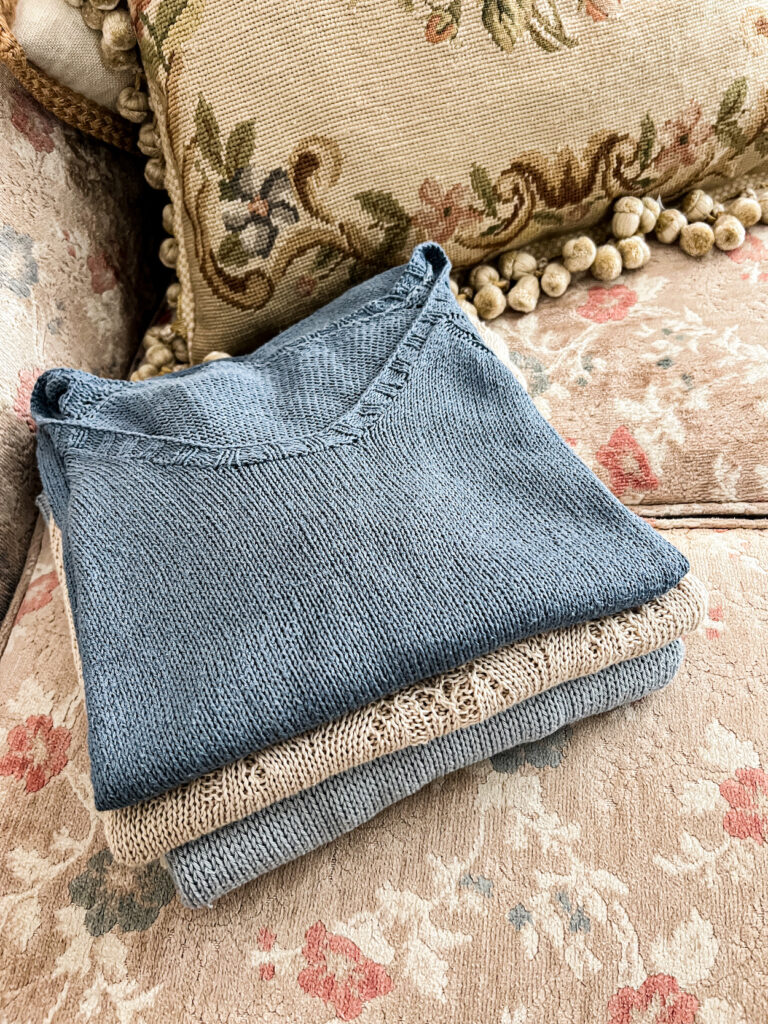
3. Linen Starts Stiff but Softens Beautifully
There’s no getting around it: pure linen yarn feels awful in the hand. It’s stiff and scratchy. If you knit for too long without a break, your fingers can even start to feel scraped up or tingly.
But if you can just get through the knitting process, you’ll be rewarded handsomely. That’s because linen softens up wonderfully with washing and wearing.
For example, my linen t-shirt I knit last summer has gotten a lot of wear over the last year. While I was knitting it, my hands were… well, not miserable, but not happy, either. The unblocked shirt didn’t look like much. When I washed it the first time, though, the yarn softened up so much and the stitches opened out.
Since then, I’ve worn and washed it more times than I can count. I even wore it for my 40th birthday party, because it felt like the most special shirt I owned. It is buttery soft now with a beautiful drape, and I can’t get enough of it.
So hang in there. The linen yarn might not feel great now, but the effort is worth it.
4. Silk and Linen are Slippery and Can Split Easily
Knitters who are used to working with wool may find themselves frustrated by the knitting experience of silk and linen. While the little toothy scales on the outside of wool help the yarn hold together and stay on needles, silk and linen yarns are the opposite. Their fibers don’t catch on each other and don’t catch on the needles.
This results in yarn that can be both slippery and splitty. Newer knitters might be especially frustrated by these characteristics.
But there are solutions to these issues! If your yarn is too slippery, switch to needles with more grip. Many knitters find that wood or bamboo needles are a more comfortable option than metal needles are when working with these yarns. While metal needles are slick, wood and bamboo both have a more grippy surface. They can help keep your stitches from sliding off your needles.
If you find that your yarn is splitting easily, the first step is to slow down a bit. Make sure that you’re inserting your needle tip under all the strands in the stitch. Then, try to knit in good lighting so you can see whether you’ve accidentally split a stitch. If the yarn is really giving you trouble, try switching to needles with sharper tips that will more easily slide into each stitch.
5. Linen and Silk Yarns Show Every Stitch
As I mentioned above, silk and linen yarns will really highlight inconsistencies in your tension if you’re knitting in stockinette. That’s because there’s no halo or bounce in the yarn to hide your irregular tension.
This isn’t necessarily a flaw. Very few knitters have perfectly regular tension, and a certain amount of inconsistency is to be expected in a handknit garment. It’s evidence that a real human being knit every single stitch in that garment with their own two hands. That’s beautiful.
If you find that your tension is wildly inconsistent, though, take a deep breath. Try to focus on repeating the same steps for each stitch using the same amount of motion. That can look like inserting your needles at the same angle, inserting them to the same depth, wrapping your yarn with the same amount of force, and/or wrapping your yarn around the same spot on the needles each time.
And remember: knitting isn’t about being perfect.
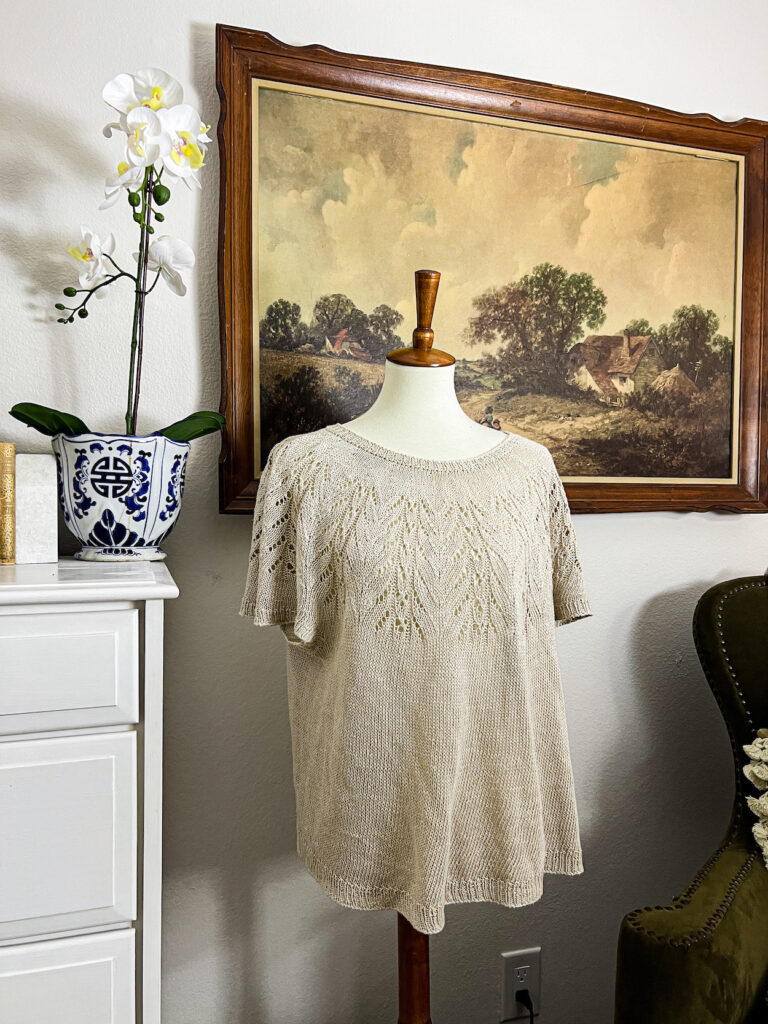
6. These Yarns Can Stretch Out with Wear
I mentioned earlier that the force of gravity can stretch these yarns out while you wear them. The larger the garment, the more likely this is to happen.
In other words, if you just have a little scarflet, it’s no big deal. If you knit a knee-length duster cardigan, though, gravity is going to play a key role.
You’ll want to plan for this when you knit your garment. For example, you may want to knit the sleeves and body a little shorter than you would if using wool. Seams can add structure and reinforcement at critical points, too.
This is why, if I’m knitting a garment top-down, I always go back and work the ribbed neckline after I finish the rest of the sweater, so the cast-on edge can add structure at a key point in the garment.
That also means you should never store garments knit from linen or silk by hanging them on a hanger. Don’t even drape them over the bottom bar of your hanger. Fold them and place them in a drawer, on a shelf, or in a basket instead.
7. Block Gently but Thoroughly
Because of how well silk and linen show off inconsistencies in tension, blocking can be extra helpful. This is doubly true for linen garments, which will also grow much softer after blocking.
On the other hand, your usual blocking process for knit garments may not work here. Let’s take a look at each fiber separately.
For silk, you’ll want to handle the wet fibers gently. Silk can become more delicate when it’s wet, which means you’re most likely to damage it during the blocking and/or washing process. Overworking the wet silk can also cause it to lose some of its sheen. If you don’t plan on ever wearing the garment directly next to your skin or are going to use dry cleaning instead of washing, then a steam blocking might work for your purposes. I just wet block very carefully because I hand wash my knits after wearing.
With linen yarn, you can be a little more aggressive with the blocking and washing process. That’s because linen needs a little more help to soften up. I like to gently agitate my linen knits in warm water with my hands to soften the fibers a bit. I might even squeeze and squish the project. Just don’t wring your wet project or you’ll distort it too badly.
8. Don’t Hang These Garments to Dry
After washing your knits, you should always dry them flat to protect their shape. This is extra important with garments knit from silk and linen yarns.
The lack of elasticity and the effects of gravity are multiplied when silk and linen yarns are wet, which means a wet knit hung up to dry will really, REALLY stretch out. What started as a cute tank top could end up with its hem around your knees.
Mesh drying racks (affiliate link) can be a great way to air dry multiple knits at once. You can also lay your knit flat on a dry towel if you live somewhere that’s not too humid. Training a fan on your knits can speed up the drying process.
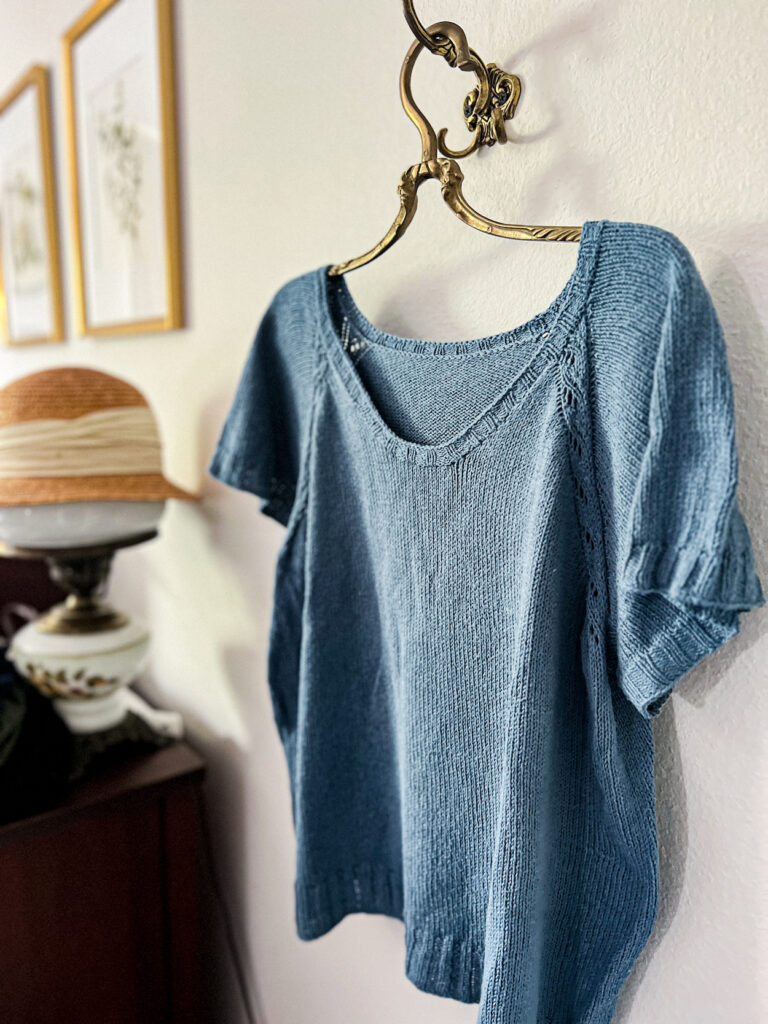
9. Knitting with Them Feels Different—And That’s Okay
Different yarns feel different in the hands. That might feel so obvious that it seems silly to point it out.
But the thing is, while we may be used to all the ways different wool yarns feel different in our hands, silk and linen yarns are different from any of those wool yarns. There aren’t any toothy or lofty or stretchy silk or linen yarns. I haven’t been able to find any with a chainette construction or any where the fibers are blown through a mesh tube for extra fluffiness.
That’s okay. Knitting is a sensory experience as much as it is anything else, and part of the fun is feeling new sensations in our hands. While these yarns might feel strange at first, you can relax into the experience and find some fun in new feelings.
10. Simple Patterns Work Best
Many stitch patterns in knitting rely on yarn elasticity to really shine. Wool yarns with bounce and elasticity are great for cables and complex stitch patterns. A toothy wool yarn is an excellent choice for colorwork.
In the case of silk and linen yarns, though, simple textures are going to serve you better. That’s because the lack of elasticity will make your cables look droopy and sad. When doing colorwork, the slickness of silk and linen will cause distortion of the colorwork pictures.
So in this case, the yarn is really the star of the show. Skip the ultra-complex stitch patterns here.
11. Pay Careful Attention to Your Joins and Cast-Offs
Because silk and linen lack the scales that wool fibers have, they’re more slippery. That can make them tricky to use when it comes to joining a new ball and when casting off.
If you’re joining a new ball of yarn, try to place the join at an inconspicuous place. One of the few things I regret about my first silk tee is that I didn’t do this, and now there is a visible join right above my heart. See if you can join the yarn at the underarm or on the back of the garment where it will be less visible, especially because the woven-in ends will be more obvious with these yarns than with wool.
When casting off, you need to be extra careful to secure your tail of yarn. The slipperiness of silk and linen means they are more likely to unravel, so I like to knot the tail securely to the back side of the hem before weaving in the tail.
For loose tails in both of these scenarios, I’m a big fan of duplicate stitch to weave them in. This is a super secure method of weaving in ends and is the least conspicuous. Some sources recommend using a secure knot instead of weaving in ends, but I don’t trust those knots to stay secure with a slippery yarn. Better to have a visible join than a hole where the knot came undone.
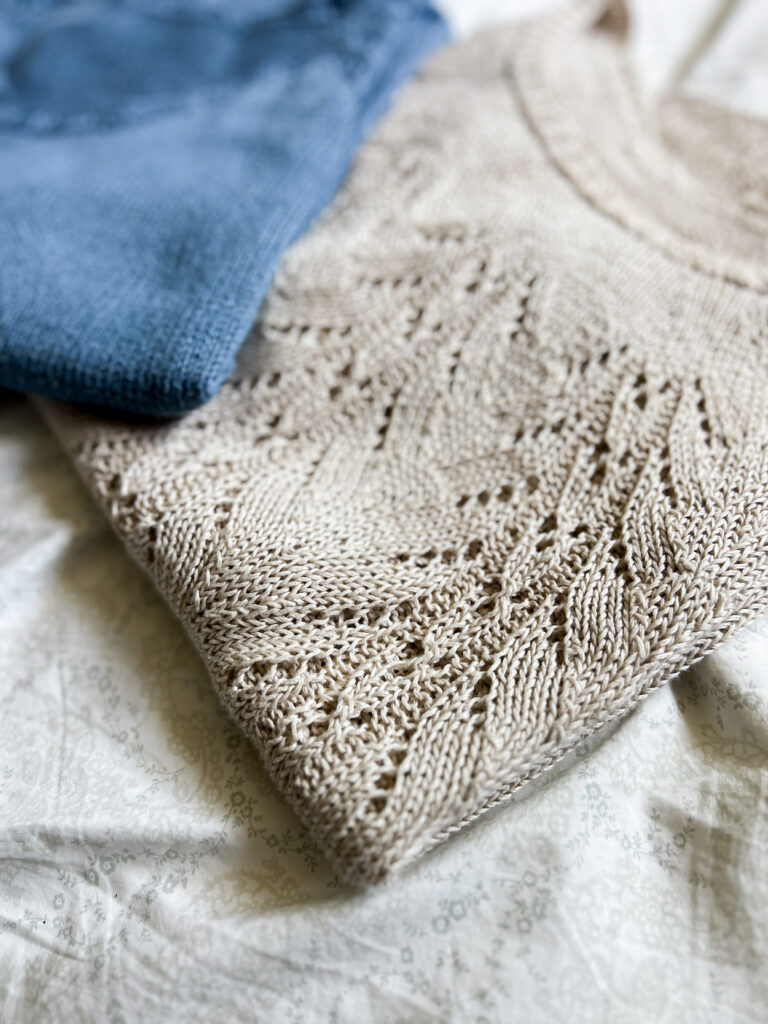
12. They’re Worth It!
This post might make it seem like silk and linen yarns are nightmare fibers to avoid, but I promise you, they’re worth it! Once you understand them, these yarns can be a real treat.
I love wearing my silk and linen knits in warm weather. They allow for lots of movement and airflow, which helps keep me from overheating.
Remember, you don’t have to jump in with both feet. If you’re nervous, you can always start small with something like a scarflet or a little bag and then work your way up to full-sized garments once you’ve gotten the hang of using these yarns.
In the end, as with so much of knitting, these yarns just require a little bit of curiosity and patience. Once you get past the learning curve, you’ll be able to make some wonderful things.
Let’s stay connected!
Join my newsletter for 30% off all new releases, regular updates with helpful tips and tricks, first crack at registration for upcoming workshops, exclusive discounts, and more.
Prefer to read without ads? Join my Patreon, which starts at just $1 a month!
Join the A Bee In The Bonnet Facebook Group to participate in knitalongs and other fun community events
Come hang out with me on the A Bee In The Bonnet TikTok
Follow along on the A Bee In The Bonnet Instagram
Get inspired via the A Bee In The Bonnet Pinterest


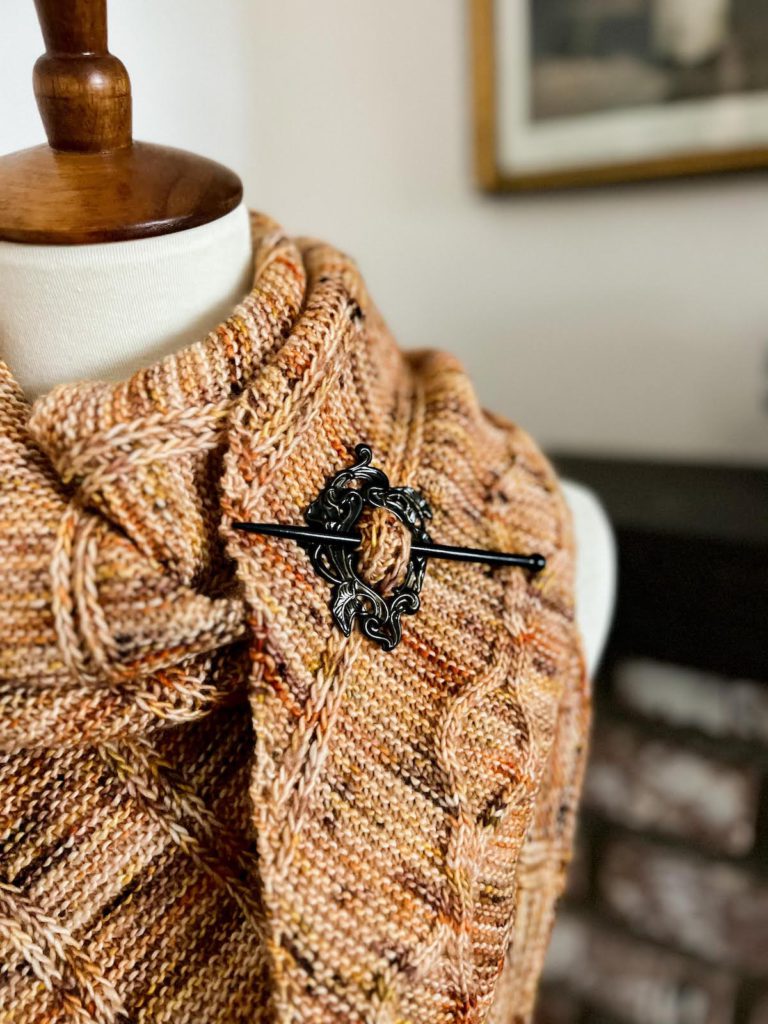

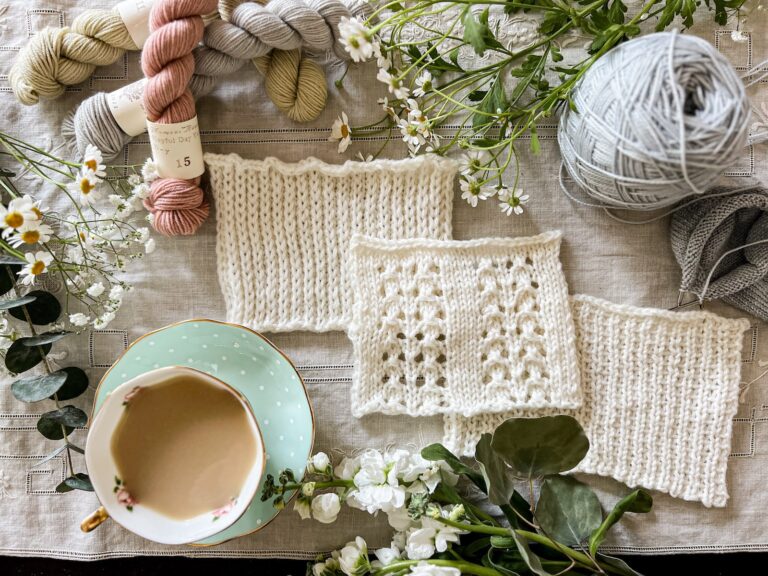
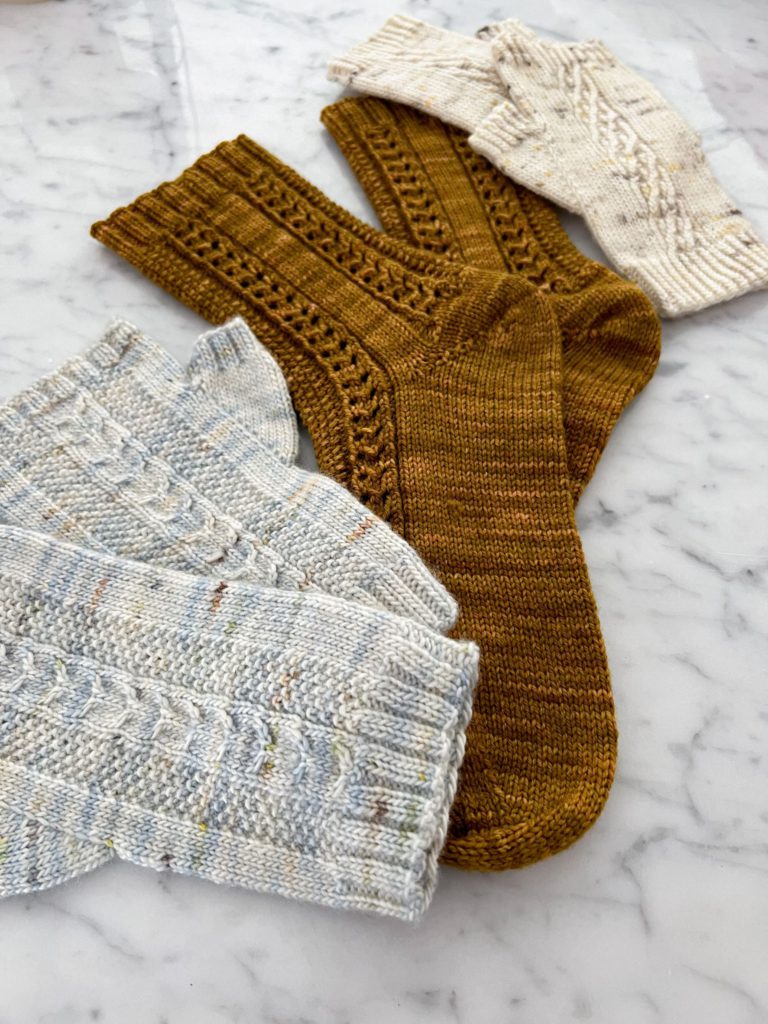
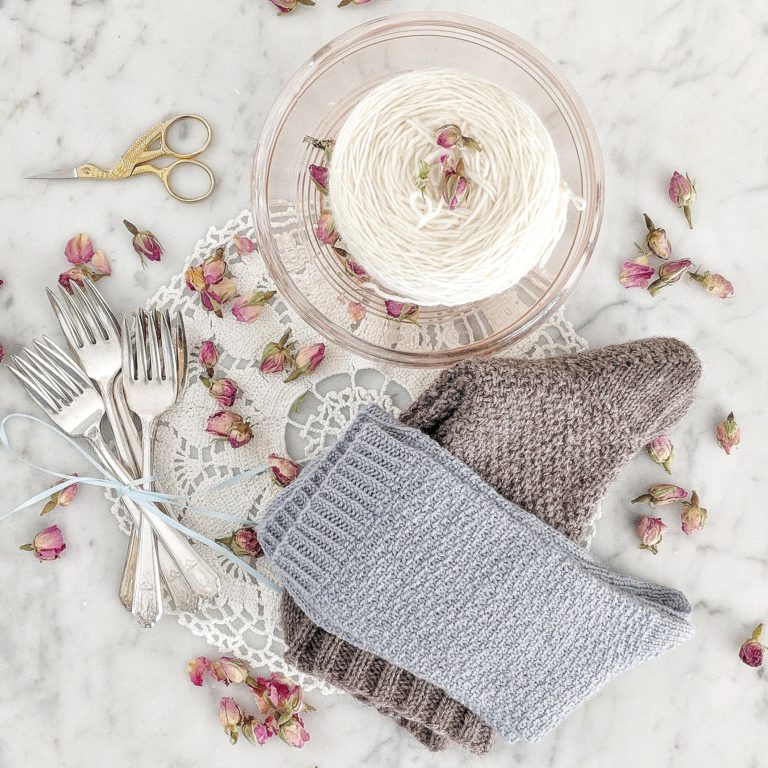
Thank you! I’m always on the lookout for natural plant yarns, as I live in the tropics (warm!) I prefer cotton yarns blended with something else. I can envision myself with cotton blended with linen or silk, but I would avoid these last two as pure forms. I appreciate your input!
I live in Southern California, so I feel you on looking for yarns that are suited to warmer weather. It’s fun experimenting with different fiber combos and seeing which fit my goals and needs.
Your tee shirts are just lovely! What are the patterns?
Thank you! The blue silk shirt is the Weekday Tee by Aimee Sher, and the tan linen shirt is the Salty Air Tee by Samantha Guerin.
Enjoy reading and seeing your lovely projects. I am a lifelong self taught knitter, but about 20 years ago I learned how to knit socks with the “Magic Loop” technique, toe up. I became obsessed. Since then I have made hundreds of pairs for friends and fundraisers and donated to charities and Winter Shelter programs. I also went over board collecting and making my own yarns from recycled sweaters. I even purchased a spinning wheel. My goal is that every pair is machine washable, without compromise of the beautiful natural fibers. Linen and silk were the biggest challenge, but the end product was worth the work.
Thanks for the kind note, Sharon. I love hearing about other knitters’ journeys and how they’ve come to where they are today. Each of us has something special to share!